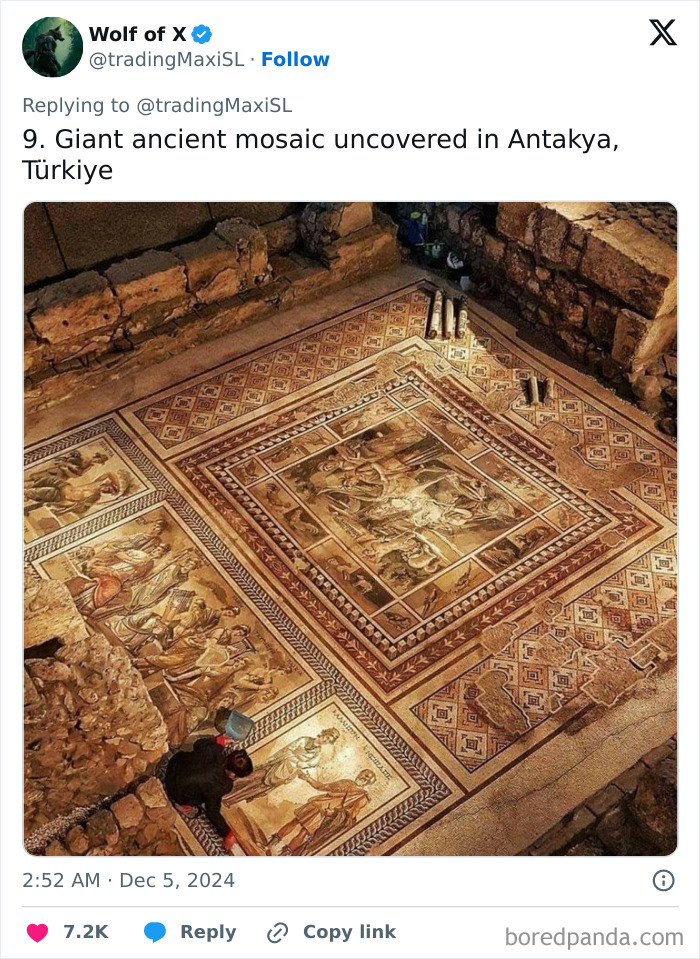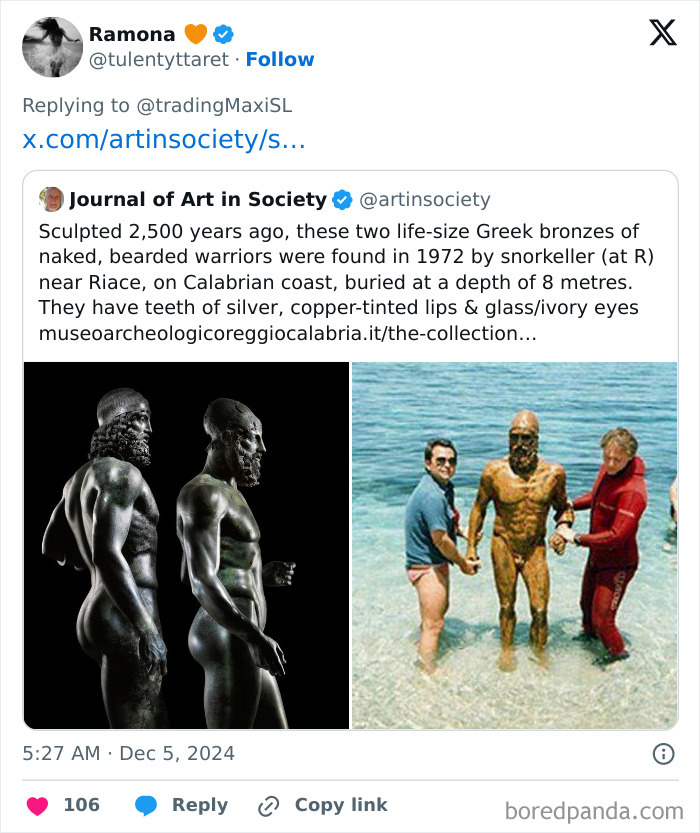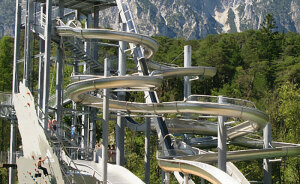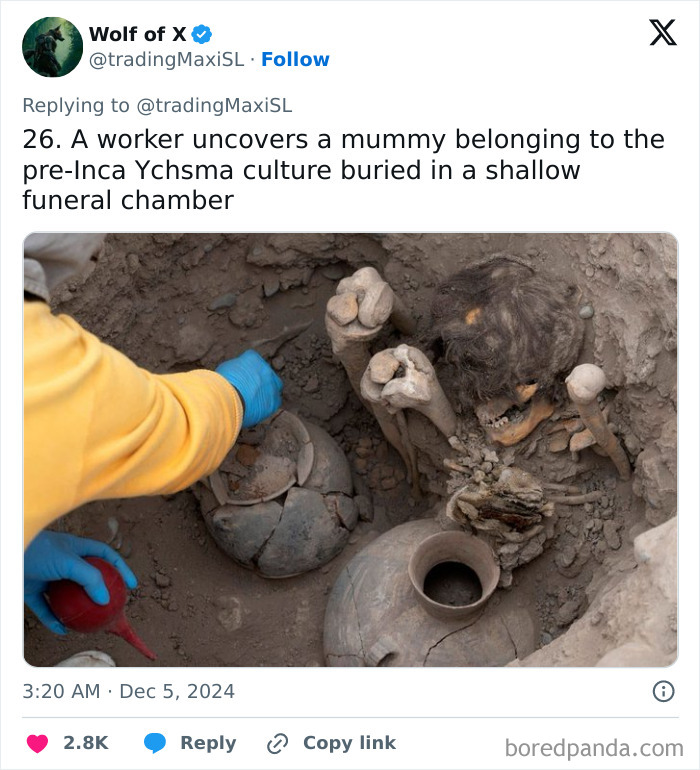You'd think that with all the ground-penetrating radars (GPR), light detection and ranging technology (LiDAR), hyperspectral imaging, drones, submarines, and digital archives, we would have already discovered the most important artifacts from our past.
However, historians, archaeologists, and even random grandmsa metal detectors continue to surprise us year after year. So, a person who goes by the handle @tradingMaxiSL on X decided to compile a list of impressive recent finds. Keep scrolling to check out the collection!
More info: X
This post may include affiliate links.
Due to the tectonic action around the region, many excavations are unearthed in this wavy pattern
This is a message to all you so-called 'christians' out there that claim the name yet know nothing of His word: Christ said to lift each other up, not tear each other down. He also said to love one another and pay your taxes. Try actually living by those rules.
Mammoth tusks are a very sought-after commodity. Ivory has been a standard material for many applications in the building of musical instruments for centuries, and in many cases there is no really equivalent replacement. Only ivory is internationally ostracized for obvious reasons. So builders of historical instruments often use mammoth ivory, as, being already extinct, mammoths are not protected by international wildlife preservation treaties. Other than "regular" ivory it can be traded legally, although being expensive.
He's still waiting for the copper coin to no longer be used as currency so he can scrap them
I hope I'm alive when they actually open the tomb... I've been curious as to what else was there since finding out about the Terracotta Army as a kid
It is difficult not to stumble on antique mosaics or relics in parts of Italy. A tourist guide in Rome once told me thatmost of the cheap "original roman coins" sold by street vendors as souvenirs are indeed genuine, as they are found so plentiful that it would be more expensive to fake them.
Is that inset bit of wood part of a complicated bit, or a mend to a broken bit?
Follow Thonis Heracleion, people. There will be some very amazing stories, artifacts and knowledge coming from there in the upcoming years.
Found the ingredients! “The two major components were starch and animal fat, which probably came from the carcass of a cow or goat. The remaining ingredient was synthetic tin oxide (or cassiterite).”
Was the entrance always underwater though? The artist/s would have to have been keen just to crawl in even if it was dry.
A 19th-century mining hammer found in London, Texas, USA. "The most likely explanation...is that a deposit of highly soluble travertine formed and hardened around it within a relatively short time." - Wikipedia London Hammer. So, not really a mystery at all.
The Sannai-Maruyama site found 10-15 minutes from my mother-in-laws house. Settled around 3900 BC. Maybe not as old as Roman and Egyptian things, but still cool. https://en.wikipedia.org/wiki/Sannai-Maruyama_Site
The Romans and Egyptians were still cavemen when that was built
Load More Replies...How recent is "recent"? I wouldn't say the Atocha is recent, let alone 19th century Limerick. Moderately interesting but another misleading title.
The Sannai-Maruyama site found 10-15 minutes from my mother-in-laws house. Settled around 3900 BC. Maybe not as old as Roman and Egyptian things, but still cool. https://en.wikipedia.org/wiki/Sannai-Maruyama_Site
The Romans and Egyptians were still cavemen when that was built
Load More Replies...How recent is "recent"? I wouldn't say the Atocha is recent, let alone 19th century Limerick. Moderately interesting but another misleading title.

 Dark Mode
Dark Mode 

 No fees, cancel anytime
No fees, cancel anytime 











































































![“Am I The [Jerk] For Not Giving The ‘Dollhouse’ I Built To My Niece, But To My Wife As A Gift?](https://www.boredpanda.com/blog/wp-content/uploads/2025/01/refusing-giving-dollhouse-niece-coverimage.jpg)




